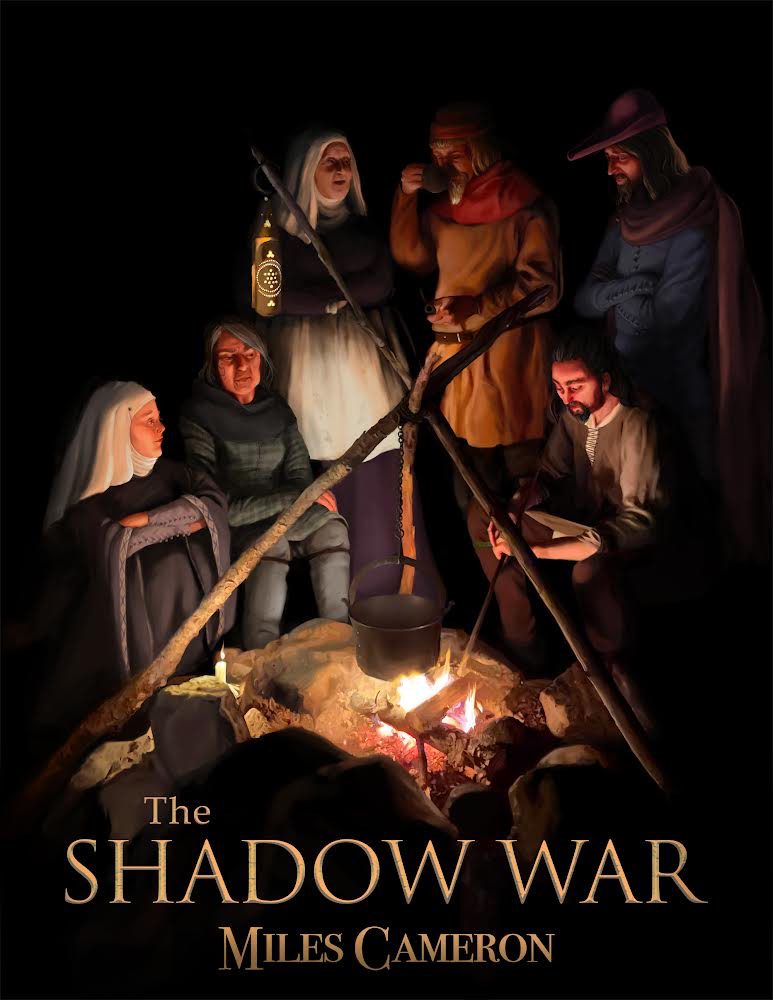 Intro to Bolognese in the Vale of Delphi
Intro to Bolognese in the Vale of Delphi
By today, my Pen and Sword tour will have gone to Mycenae, Tiryns, Argos, Olympia, and be well on our way to Delphi. If we’re lucky, we’ll stop and look at the battlefield of Plataea; the battlefield, and the ruins of the walled city where Arimnestos grew to manhood. And the plains of Morea in the Red Knight.
Delphi is a magical, haunted place. i suppose if you go at high summer, the mystery is largely gone; I wonder sometimes if the Greeks thought the same. But in the fall, there’s delight everywhere, and with a little luck, we’ll be horseback riding in the Vale of Delphi later today, after a reverential visit to the temples and the museum.
But before that; every morning, in fact….
….There’s sword class.
Listen, I’ve been incredibly lucky as a swordsperson. I’ve had great teachers all my life; I’ve known a great many good swordspeople in a wide spectrum of disciplines; so many, in fact, that when people say ‘you do sword fighting? that’s really cool. Never met anyone…’ etc, I always think ‘You should get out more often.’ Jay Borne, my middle school fencing coach; Mike Edgar, my first ‘sensei’ although he’ll blush when I say it; Delos Wheeler, a great epee fencer; Ian Brackley, still my favorite small sword teacher; Sensei Zimmerman, in Aikido and Iado; Guy WIndsor for Italian long sword in Finland; Greg Mele for the whole world of Armizare and Chivalric fighting arts…
And I’ve been taught in a fascinating variety of styles. Not sword styles…that’s another blog. My first maestro, in classical (Italian) fencing, carried a very heavy fencing saber and not a fol, and hit us when he didn’t like something, which was all too frequent. Mostly I got hit in the back of the leg. Because of my stance, or posture.
In a piece of remarkable, and painful irony, when I was in boot camp, my Marine Corps DI used to hit me int he same leg, for a very different fault. I hope this makes you laugh, especially if you are a Navy or Marine Corps vet, but I was, when I joined up, a 10 year veteran of Revolutionary War reenacting. I’d done a lot of drill. I was pretty much a master of His Majesties 1764 Manual, which is shockingly very close to the ‘Naval Boarding Party’ Manual they teach in basic. Except the whole right foot going back at ‘present arms.’ I did a great many push-ups, and I had a DI in conniptions. For weeks. Same leg.
Later, when learning Armizare, the leg was in trouble again, this time for not being ‘wide’ enouhg in my stance. But no one hit me…
As usual, I digress. So, my first experience of martial arts training was very regimented; only the instructor talked, and everyone was too terrified to ask any questions. No theory was taught at all; we did pretty rigid drills.
Then I took Kendo. We were encouraged to shout, at times. Everything was very fast moving, and seemed to me a little chaotic after classical fencing. But the rigid structure was still there, underneath. You bowed to your maestro. I mean sensei. All the time, it seemed.
Later, I did Aikido. My friend Wes Shuler fired me with enthusiasm for Aikido in Kenya on an operation, and tossed me around a hotel room, but given his infectious enthusiasm, his John Wayne ‘can do’ attitude, and my general hero-worship of him, it was way more fun than all that regimented stuff. I got one on one instruction. Lots of it. The lesson was not lost on me, either; I mean, by then, I was a very, very good epee fencer, and I’d had lots of private epee lessons from good coaches. Not one of them was as good at making me want to emulate him as Wes, and I don’t think Wes even thought of himself as a ‘martial arts instructor.’
A few years later, in Canada, I took Aikido formally, and it was yet another teaching style; lots of respect for the sensei, true, but a very informal attitude about many things; regimented displays at times, but lots of demonstrations. Bit almost no one ever speaks aloud in my dojo. The sensei instructs. But he (or she) does not usually speak. The silence is very nice, but at times, to this gai-jin, hopelessly confusing. About the ninth time I ask the sensei to show me a technique, I no longer want to play. Or I’d like a little verbal coaching. Still, I got that lesson too; sometimes words get in the way. Patient repetition is wonderful. Well, to a point.
In the world of Long Sword and Armizare, I started with Guy WIndsor, who runs a very successful and rather wonderful school in Finland, the School of European Swordsmanship. It was very like my early fencing life; Guy teaches, and students are quiet and respectful. To be honest, Finns are very quiet when they accept authority. But Guy also teaches with immense charisma, and his line of patter… is very smart, very focused, and sort of diametrically opposed to the Aikido silence. Fascinating, Captain. There seem to be many ways to learn martial arts.
Finally, in the North American schools of fence, or of Armizare, there is a certain rather American (or Canadian) unease with authority. No one in North American Armizare wants to call themselves a ‘Master’ although there are at least four people I see as ‘masters.’ There is a certain informality of dress; no one bows to anyone. And perhaps it is the Millennial generation, but I hear and see fewer and fewer of the outward signs of respect, and I wonder….
And yet, early this summer, I took a pole axe class in my own Salle (at Pia Bouman school of Dance in Toronto) and Jason Smith had a wonderful touch; clever as Guy, sometimes silent and sometimes loud, full of patient repetition and good drills, but also encouraging some student thought and experiment. By the way, Jason ‘informs’ the character of Ser Danved in ‘Dread Wyrm.’
So… when I teach, I’m trying to channel all the best bits of all these styles of teaching. I have a good friend who does no martial arts at all; she’s a linguist, and she teaches ESL. Despite this, she’s taught me a great deal about ‘teaching’ and the thought-processes involved. Perhaps the best thing she’s drilled into me is that every student is different, and every one of them probably needs to be taught individually. Even when you face a dozen new beginners, you need to suss them out and start thinking about what they need.
That’s why the Pen and Sword tour’s sword section is so much fun. As we’re together 24/7, I get to think about all these people as sword students every day. And think about who they are and how they learn. And how I learn.
Perhaps the oddest lesson, last year, was about the aesthetics of sword class. Having class 2000 feet above the Vale of Delphi is amazing. So amazing, so beautiful, as to be an incredible experience. Those mountain dojos in Japan… perhaps they are on to something. We tend to train in drag, modern, almost industrial spaces; is there anything uglier than a modern gymnasium? Or a boxing gym? I’ve been to pretty dojos, but not many. But training outside, amidst beauty… is very good for students and for the teacher. I have no real idea why; I could theorize, but I’ll spare you all, just this once.



THnaks for the post.
Some thoughts on reasons training outside works. It’s where we are meant to be when we move. that is where one is more likely to practice the skill. but as with much of modern life we now do it in a “sterile” indoors. When we did make that shift? The last few hundred years or so. We of course have illustrations of indoor training but not many. Not least because having a building large enough to train in would be hard for a number of reasons, not least space in a city, cost and the various laws against running schools of fence in the confines of the city
Many of the older Japanese ryu hav dojos but train outside when possible, the dojo is for other reasons and for when it is not possible to train outside but even then the weather is not much of a factor.
There is also research that our brains are wired for nature, not surprising really, but that it functions best when surrounded by the stimulus of the chaos of nature rather than the dull and unstimulating lines and surfaces of man made environments.
As to the ways of training or teaching and learning. There are obviously many reasons, but what gets overlooked is that the method of teaching is driven by many factors other than the one that most efficiently passes on the information and develops the skills. Tradition, the system, hierarchy, time constraints, or keeping people in training, w can also add in, why are people training in the skill.
Is it goal orientated or longevity orientated, many styles are more interested in longevity, preserving the things that identify the group, the hierarchies tc. The goal orientated are focused in the getting the learner to do the job
One idea I try to keep in mind with my own teaching; To teach the subject or teach the student. we should teach the student.
To carry the concept across, The subject is the longevity side of the balance. I would say in general, the student is the goal. Of course done well and done in a rounded fashion, then the goal is carried over a long term, refinement and improvement and… just because it is something to be practiced, but it seems that the goal should be to teach the student to function with the skill in it’s intended context in as short amount of time as possible and in effect, to no longer need a teacher at least not in the immediate and necessary for that it is often considered. My job as a teacher is to put myself out of a job.
Again you have provoked me into a stream of thought.
Thanks again and it looks like you had a great trip
Best
Jonathan